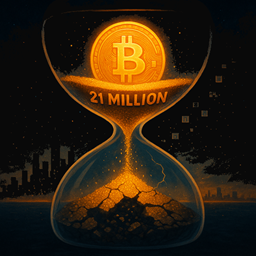Understanding The Bitcoin Standard: A Simple Summary
This post offers a clear, straightforward summary of the influential book The Bitcoin Standard: The Decentralized Alternative to Central Banking by Saifedean Ammous. The book explores how Bitcoin could serve as the backbone of a new financial system based on sound money principles, replacing the unstable fiat systems of today.
If you’re just starting to learn about Bitcoin, this book is one of the most recommended starting points.
- Author: Saifedean Ammous
- Full Title: The Bitcoin Standard: The Decentralized Alternative to Central Banking
- ISBN: 978-1119473862
- Key Concept: Bitcoin is presented as a digital form of sound money, with a fixed supply and decentralized nature, offering an alternative to government-controlled monetary systems.
- Related Book: The Price of Tomorrow by Jeff Booth is often recommended as a companion read.
What Is the Bitcoin Standard?
The Bitcoin Standard is a bold idea. It imagines a world where Bitcoin becomes the foundation of the monetary system, similar to how gold was used during the gold standard. Saifedean Ammous explains how Bitcoin could become the modern version of sound money for the digital age.
Bitcoin as Hard Money
These traits make Bitcoin resistant to inflation and debasement, similar to the qualities that made gold valuable in the past.
Only 21 Million… and Likely Less

Bitcoin has a hard cap of 21 million coins, but the actual number in circulation will be lower. Why? Many early coins have been lost forever. People forgot passwords, lost hard drives, or threw away wallets before Bitcoin had real value. Some estimates suggest that up to 20% of all Bitcoin may be permanently inaccessible.
Better Than Gold?
Bitcoin improves on gold in several key ways, making it more adaptable to the digital world:
Decentralized and Global
Bitcoin isn’t controlled by any government, company, or central bank. That means:
This makes Bitcoin a powerful tool for financial freedom, especially in countries with unstable currencies or limited banking access.
First a Store of Value, Then Money
Right now, most people use Bitcoin to store value, hoping it will grow or hold purchasing power over time. As adoption grows, it may also be used more for:
- Everyday transactions
- Pricing goods and services
That transition would make it a full-fledged form of money.
Why It Matters
Fiat money (like dollars or euros) can be printed endlessly. This causes:
- Inflation
- Loss of purchasing power
- Economic instability
Bitcoin offers a way to save money that cannot be inflated or manipulated. It puts financial control back in the hands of individuals.
Bitcoin as a Reserve Asset?
Some believe Bitcoin could eventually replace the US dollar as the global reserve asset, because:
- It is neutral (no country owns it)
- It can’t be weaponized in geopolitical conflicts
- It offers transparency and independence
The 2022 sanctions against Russia showed the risks of relying on a currency controlled by one nation. Bitcoin avoids those risks.
The Big Picture
The Bitcoin Standard isn’t just about cryptocurrency. It’s about rethinking the entire concept of money. It looks back through history — from barter to gold to paper money — and suggests that Bitcoin may be the next logical step.
It is:
- Scarce and secure
- Decentralized and censorship-resistant
- Designed to be fair, predictable, and open to all
This vision is still unfolding, but it challenges everything we thought we knew about money.
Fixed Limit
There will only ever be 21 million Bitcoin in existence. This is hardcoded and cannot be changed.
Most Already Mined
Over 19.6 million Bitcoin have been mined. That’s more than 93% of the total supply.
Few Remain
Fewer than 1.4 million coins are left to be mined. New issuance slows over time and will continue until the year 2140.
Some Are Lost Forever
A significant portion, estimated up to 20%, may be permanently lost due to forgotten keys, lost wallets, or early user error.
Increasing Scarcity
With fewer coins available and rising interest, Bitcoin becomes more scarce and valuable over time.
From scarcity comes abundance
Hard Money Characteristics
Bitcoin’s strict, predictable supply gives it the properties of digital hard money, unlike fiat currencies that can be printed without limit.
